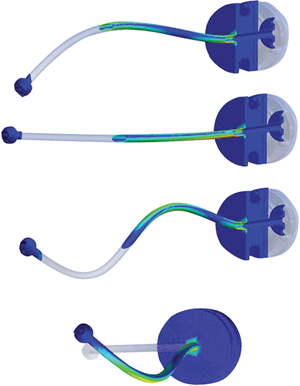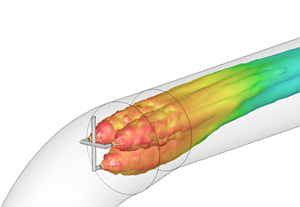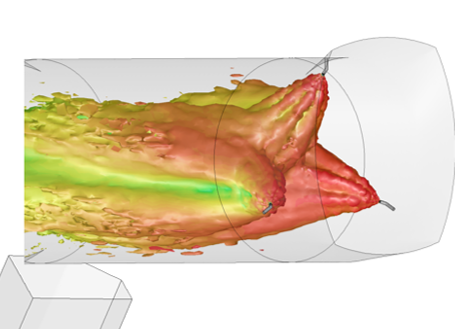During chemical processing, manufacturers use injectors to cool noxious gasses, vaporize chemicals, or minimize hazardous material before safely disposing. These injectors often reside in pipes of varying sizes. As these chemicals or gasses pass through the pipe, they’re often moving at high velocities and can cause the injector to shake or vibrate. This causes injector hardware failure and, as a byproduct, the plant is forced to shut down for maintenance and loses precious time and resources.
Fortunately, there is a solution to hazardous or dangerous spray applications – CFD. For more on what CFD is and how it’s used, visit my earlier article.
We perform CFD simulations for applications like these by applying stress analysis to our simulation, called fluid-structure interaction (FSI). FSI simulations ensure nozzles, , injectors, and headers do not experience extreme forces that may result in failure. Among other applications, FSI is popular in vortex shedding, chemical processing, and gas cooling.

As we’ve discussed, flow-induced vibration occurs when strong aerodynamic forces from the passing gasses or chemicals produce loading forces on objects in the flow, like injectors, causing vibration. This leads to potential structural failure and the most concerning scenarios involve strong shedding frequencies, which, can cause catastrophic failure due to unbounded mechanical vibration. So, these vibration simulations are necessary to ensure mechanical integrity of both the structure and the lances.
By capturing the complicated dynamics and interactions of the gas flow, liquid spray, and mechanical stresses, we can verify both the type of spray equipment that should be used and the optimal equipment within the pipe. In the end, we can design, develop, and position an injector to ensure flow-induced vibration does not occur.

Why does this matter? Chemical processing plants can burn through millions of dollars by constantly replacing spray equipment or shutting down a plant due to equipment failure. Performing CFD studies to ensure proper equipment selection and optimal location within the process can generate a return on investment in a matter of seconds, depending on the process.
Furthermore, this kind of work highlights what technology is currently laying bare to all with their finger on the pulse – optimizing processes we take for granted is enhancing nearly every aspect in manufacturing and business, resulting in cost savings, higher profits, and augmented production.
If you’d like to discuss the topic more in depth please contact us or connect with me directly via LinkedIn.


